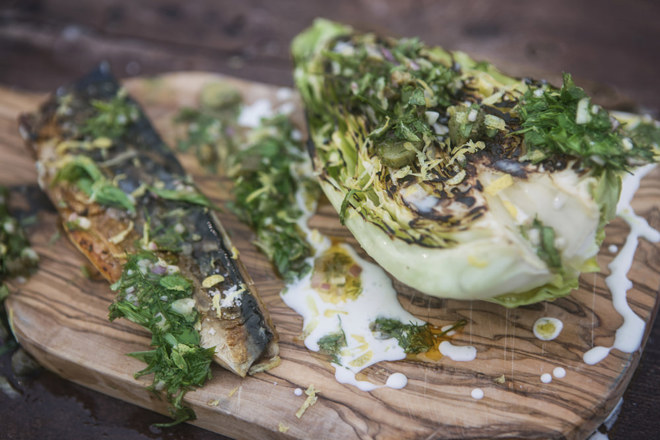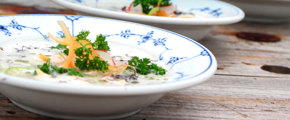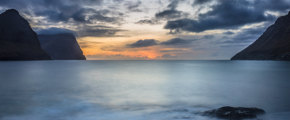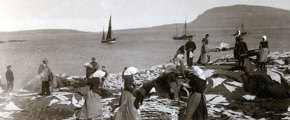Atlantic mackerel
Atlantic mackerel is fast swimmer that migrates to the waters around the Faroe Islands to feed during the summer. This stripy fish has deliciously firm and fatty meat, which is extremely rich in Omega-3 fatty acids, vitamin D and selenium.
The Atlantic mackerel has a dark flesh that is firmer, fatter and juicier than that of fish with white meat.
Atlantic mackerel has become increasingly popular with chefs over the last years, as its rich, full and delicious taste works well in many different types of dishes.
Mackerel can be fried, cooked and smoked, and because the meat is so firm and fatty, it is particularly well suited for grilling. Whichever way you prepare it, mackerel tastes best when served fresh.

The high levels of fat in mackerel also mean that it can go off quickly and produce a rather pungent smell. It is therefore important to chill the fish properly and preserve it the same day that it is caught. Historically, this meant that mackerel was mostly preserved by smoking, pickling or canning, with fishing and coastal communities eating it fresh.
Today’s modern fishing gear and high-tech freezing facilities allow the Faroese industry to provide fresh Atlantic mackerel to consumers all around the world. The cooling process is crucial to preserving the mackerel’s excellent fresh taste.
Faroese fishing vessels cool the mackerel in refrigeration tanks or freeze it as soon as it is caught. The factories on land are some of the most advanced in the world, securing the cooling process throughout the entire production. This ensures that mackerel produced in the Faroe Islands is properly preserved from the moment it is caught until it is in the hands of the retailer.
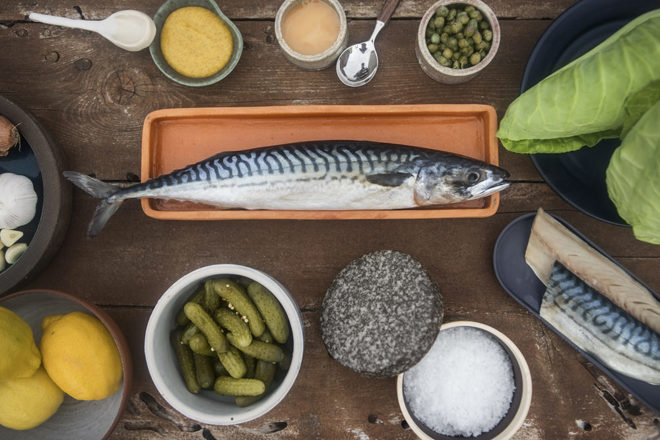
Biology
In the Faroe Islands Mackerel is called Makrelur. The Atlantic mackerel (Scomber scombrus) is a pelagic fish that travels in large shoals in the upper layers of the ocean and can be recognised by the dark tiger-like stripes across its blue back. The sides are silver with a tinge of purple and the stomach is white.
It has two dorsal fins, one starting at the back of the head and the other close to the tail. In front of the latter dorsal fin are several small fin-like spikes. There are also pectoral fins on either side, and a pelvic fin and a posterior fin on the stomach. In front of the posterior fin there are also fin-like spikes. The Atlantic mackerel can grow to 70 cm in length, but averages around 30-40 cm when caught.
The Atlantic mackerel is a migratory species with stocks in both the eastern and western parts of the North Atlantic. The mackerel travels far and wide across the North Atlantic, all the way from the North Sea, up past the Faroe Islands and Iceland and also into the Baltic Sea.
The Atlantic mackerel keeps close to shore and during the winter they will dive down close to the sea bed at a depth of about 200-250 meters. The mackerel is a very fast swimmer, but has no swim bladder, so it has to swim continuously in order to keep from sinking. The mackerel is a carnivore and lives off krill, crustaceans and small fish. A fully-grown mackerel will even eat small herring and younger mackerel.
Mackerel spawn from February to July in the upper layers of the ocean and the larvae grow to 8 inches within the first few months. Once they have spawned, they migrate to Faroese waters in search of food.
Faroese fishing vessels start fishing mackerel during the autumn and continue through to winter, when they are particularly fat and full of healthy proteins and vitamins. The Faroese vessels use dragnets and trawls to fish for mackerel.
The Faroe Islands take an active part in international cooperation on fisheries management and conservation of mackerel in the Northeast Atlantic. Faroese mackerel fisheries take place in Faroese waters, the Norwegian Sea, the North Sea and to the west of the British Isles. Exports of Atlantic mackerel from the Faroe Islands include filleted, headed & gutted and whole frozen products.
